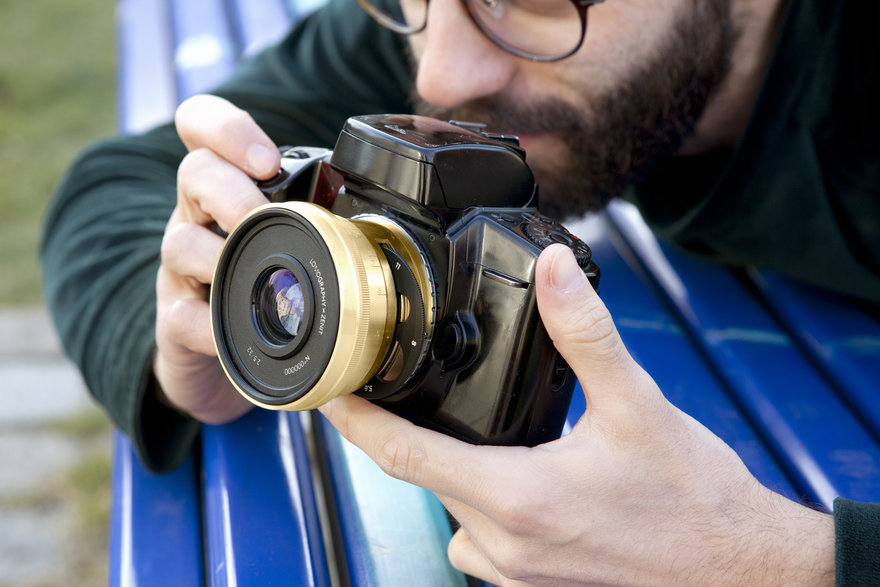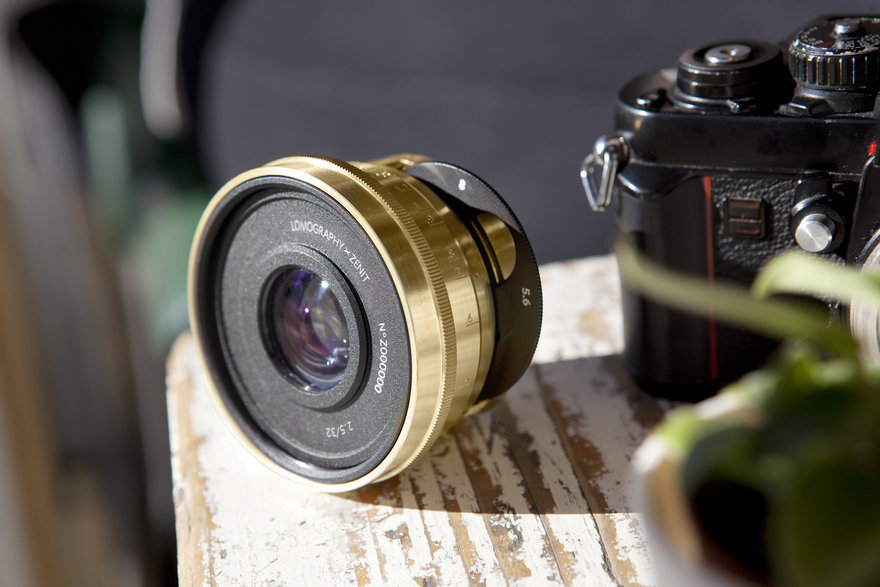#HTE
Lomography’s Focus? Blurring the Line Between Professional and Casual Photography

Daniel Schaefer was the youngest member of Los Angeles’s Magic Castle, a private magicians’ club with an exclusive guest list and a strict dress code. He knew some sleight of hand, but he spent more of his time there taking photographs, mostly using affordable vintage cameras instead of expensive new equipment. “I was 15, 16 years old, shooting a bunch of the other young magicians backstage getting ready for their performances, on really gritty Delta 3200 high-speed film, in these beautiful black-and-white noir scenes; the reality was that they were a bunch of goofy Santa Clarita kids playing cards.”
The pictures didn’t turn out perfectly, but that was kind of the point. The aberrations and imperfections forced him to understand his equipment and make artistic choices.
Schaefer didn’t follow the magician career track very far, but he’s carried the moody narrative approach and appreciation for vintage cameras into his professional photography practice and his work with Lomography, a company that makes vintage-inspired cameras. Their latest Kickstarter project, the Lomogon 2.5/32 Art Lens, promises a 32 mm focal length and a minimum focusing distance of 0.4 m, which allows for a healthy mix of cinematic close-ups and wide-shot scene setting, plus a rotating, round aperture for soft bokeh.

A chance encounter with vintage cameras starts a movement
Lomography was born in the early ‘90s, when a group of Viennese students discovered LOMO LC-A cameras, and the delightfully saturated, vignette-like photos they produced, while traveling. Two of those students, Sally Bibawy and Matthias Fiegl, started casually importing them for friends, and eventually bought the former Soviet factory that made them to scale up their operations.
Lomography evolved from a nonprofit photography collective, exhibiting works and championing the “10 golden rules” of casual point-and-shoot photography, into an independent business that revives vintage-style lenses in original new designs.
Ten successful Kickstarter campaigns have kept them going strong, but their real lasting power comes from their products’ durability and distinct character. You can count on your Lomography equipment, but you don’t really know just how your shot will come out—and photographers love that.
“Most of the lenses on the market now have perfected image quality,” says Lomography marketing and PR manager Birgit Buchart. “We saw there was an opportunity to bring people back into embracing the aberrations you get in historic lenses.”
“I think the big difference is that we’re not trying to figure out the market fit, we’re just passionate film photographers,” adds Lomography USA’s general manager Frank Dautant. “We go with whatever we feel is fun, we release what we think will be most exciting for photographers.”
Now that anyone can take a perfect picture, photographers look for happy accidents
“I tend to shy away from the tradition of modern photography to have this sort of crisp cleanliness to it,” Schaefer explains. “I like to dirty it up a little bit, I like to have a cinematic element, I like to frame things wide and show the scene and the subject, and make all of those pieces come together to show a little bit more story, make it more cinematic. The vintage optic designs Lomo brought back feel more naturalistic and loose; there’s more attitude and more flavor.”

The Lomography team hears this from many of the photographers they work with: The oppressive sameness of the polished shots on Instagram and in product photography drives them to play with imperfections.
“Back before photography, people would paint super naturalistic depictions of reality,” Buchart says. “Then, once photography was invented, all of a sudden you didn’t have to do that, and impressionist and surrealist painting emerged. I think that is what we are seeing in photography now. Everyone gets sharp, perfect photos on their phone every day. For people who are actually interested in photos, that gets boring. And when people move over to film, we want to encourage them to feel that it doesn’t have to be the perfect photo, it’s more about working through trial and error and embracing the emotion of the medium.”
Amateurs are welcome
Lomography’s products have always fallen somewhere between casual and professional use. On the one hand, their “golden rules” encourage people to experiment and see what happens. But Lomography also speaks to enthusiasts who want to explore the medium more deeply.
The Lomogon, Lomography’s first wide-angle lens for SLR cameras, fits comfortably in that in-between space. “It’s exciting because it combines the professional world and the original Lomography community,” says Dautant. “It’s a revival of the LCA lens that was on the Soviet cameras that started the whole Lomography movement. We’re bringing the lens from this fun, tiny camera to the art lens world. So we have professional photographers who want to try out a new lens for their camera and also the normal community of old-fashioned film photographers who can now have the aesthetic of that camera on a professional level.”

“The Lomogon is a really nice balance,” adds Schaefer. “If you want to be a better photographer, shoot with a wider lens than you expect. Something like a 35 or a 28 forces you to get a little bit closer to your subject; it forces you to have more of an intimate relationship between the camera, the lens, the subject, and the space. You inherently have to be closer to fill the frame. It really feels like the human eye, the space the eye can see. The 32 range gives this immediate sense of the balance between the scene and the subject that I really like.”
The Lomogon 2.5/32 Art Lens is live on Kickstarter through March 22, 2019.
https://www.core77.com/posts/84629/Lomographys-Focus-Blurring-the-Line-Between-Professional-and-Casual-Photography
